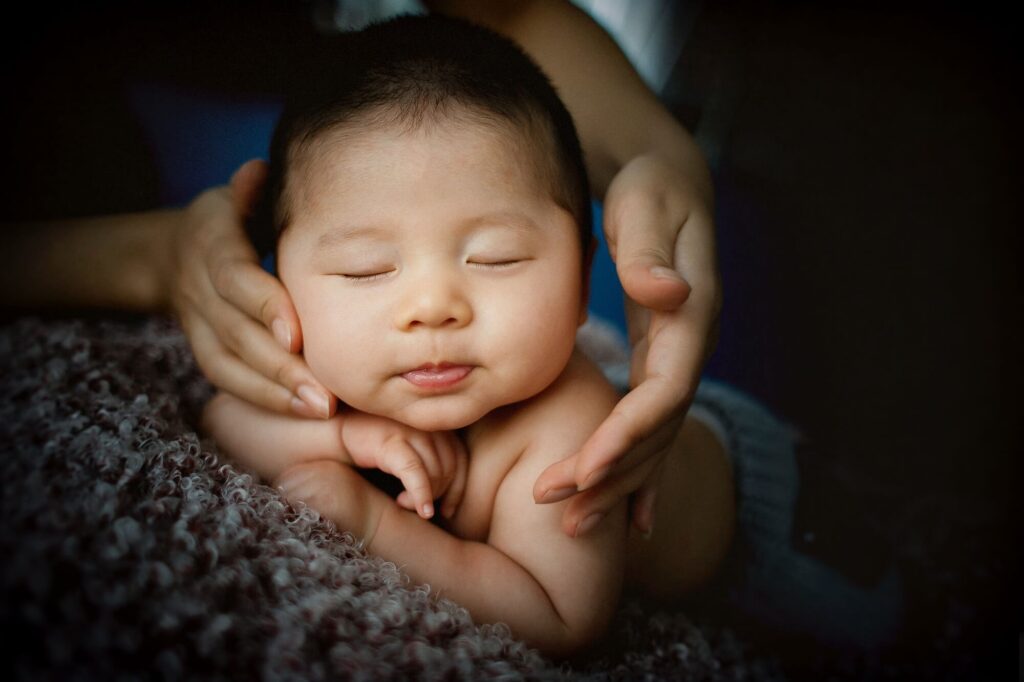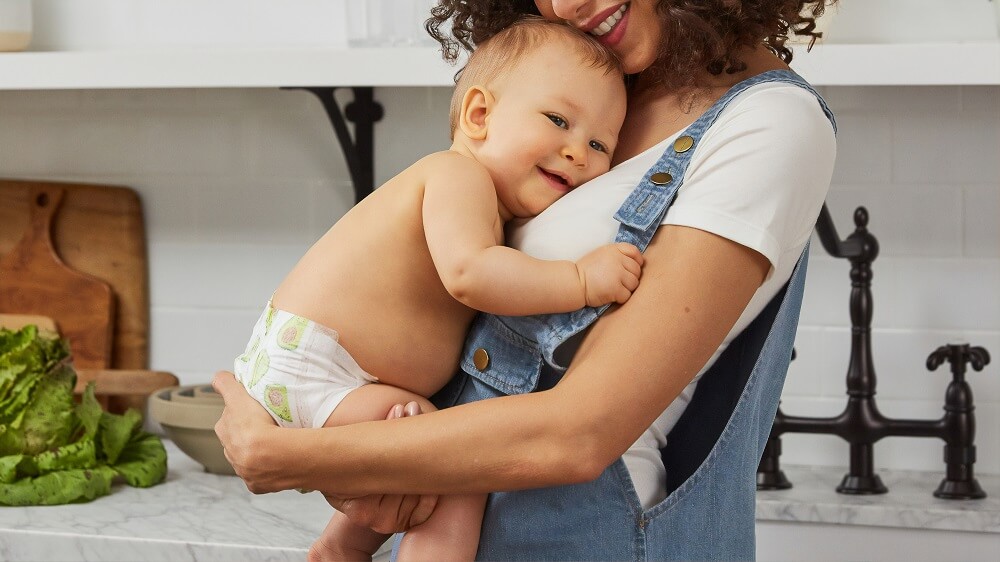
Whether you’re a parent, relative, friend, or babysitter, baby-proofing your home is an important part of taking care of a baby or toddler. Use this baby-proofing checklist to eliminate potential hazards and help make your home safe and secure.
Why Is Baby-Proofing So Important?
Keeping a new baby safe as they learn to crawl, walk, and run isn’t easy. Children are curious about the world; they love to explore; and they want to touch, smell, and taste everything they can get their hands—or mouths—on!
Unfortunately, that can mean danger. Babies and toddlers know their world is interesting and exciting, but they don’t understand that some things have the potential to hurt them. For instance, up until around three years old, children have a natural instinct to chew on things and try to put them in their mouths. However, at this young age they don’t yet have the ability to distinguish between what’s safe to chew on and what might harm them.
This is why baby-proofing your home is so important. It’s a critical part of caring for a child because it helps ensure their world is safe for them to live in, explore, and learn from.
Do You Need to Baby-Proof Your Home?
Baby-proofing is essential for the parents of a new baby, of course. But even if you’re not the parent of a new baby or toddler, you may want to consider baby-proofing your home. It could be important for close relatives and friends and anyone else who can expect to welcome a child into their home for any length of time. Grandparents, aunts and uncles, godparents, and other close friends may need to baby-proof part or all of their home.
How to Baby-Proof Your Home
To properly baby-proof, first consider what areas of your home will be accessible to the child. Will it just be your living room and bathroom? In that case, baby-proof those areas, and then use items such as baby-gates or doorknob covers to restrict access to other parts of the house.
One useful baby-proofing strategy is to get onto the child’s level—literally. Lie down, and look at your home from a toddler’s point of view. What can they see? Remember that when a baby starts walking, they tend to grab onto nearby objects to help them stand up. What will they grab onto when they want to get to their feet?
When baby-proofing a home, it’s always better to err on the side of caution. Never assume that because something is very unlikely to happen, it’s safe to ignore the risk. And use double precautions whenever you can. For instance, lock household cleaners away in an upper kitchen cupboard, and lock that cupboard, even if it’s out of a child’s reach.
Restrict Access Easily by Locking Doors
Depending on the layout of your home, you may be able to lock certain doors rather than baby-proofing those rooms. If a room doesn’t need to be accessible, then it’s easier to just lock that room. This strategy should allow you to lock most rooms, including bedrooms, bathrooms, home office or hobby room, and the garage.
The simplest option is to use child-proof doorknob covers. These covers are made of tough plastic and are installed by simply clipping onto the doorknob. Once installed, the doorknob works similarly to childproof caps on medicine bottles. Little hands can’t manipulate the knob to open the door, but adults can easily grip and turn the knob to open. Similar options are available for lever-style door handles that prevent the handle being turned far enough to open the door.
Restrict Access with a Baby-Gate
Depending on your home’s layout, a baby gate may be a good solution to make sure the child stays in a safe, baby-proofed area. Baby gates are quick and easy to install, and they’re just as easy to remove when no longer needed. They’re great for locations such as hallways and staircases, as they restrict access for the child, but it’s easy for an adult to step over the gate.
If you live in a home with an open floor plan, look for an extra-wide or extendable baby gate, and check your measurements before purchasing. If a baby gate doesn’t fit the space correctly, it may not be secure enough to properly baby-proof the area.
General-Purpose Baby-Proofing
- Set your hot water temperature to no more than 120 degrees Fahrenheit.
- Cover all electrical sockets with child-proof guards. There are guards that can be applied to both empty sockets and those in use.
- Don’t leave electrical appliances out. Always unplug and store them somewhere inaccessible to the child.
- Install a safety gate both at the top and at the bottom of stairs. It’s not enough to just put one at the top. If a child can be injured falling from the top stair, they can probably be injured just as badly falling from the second-from-the-top.
- Baby-proof windows by installing stops on any accessible windows, and secure them so the windows can’t be opened more than four inches. If you’re renting and are concerned about damaging the window frames, look for stops that are applied with suction cups.
- Some metal HVAC vent covers have sharp edges, which can lead to injury quickly if a child becomes interested in the cover. Baby-proof floor vents for your HVAC system by replacing metal vent covers with plastic ones. Most vents come in standard sizes, and you can buy plastic vent covers online or at most hardware stores.
- Place non-slip pads underneath carpet runners and rugs.
- Check your house—and yard or patio, if you have one—for plants that might be poisonous or otherwise hazardous.
Living Areas
- Wall-mount your TV, and secure cables out of sight and out of reach.
- Use a fireplace guard to block off fireplaces, or baby-proof a wall heater or radiator.
- Install corner guards on coffee tables and any other tables with sharp or squared-off corners.
- If you have blinds or curtains with looped cords, tuck the cords out of reach.
- Make sure small objects are inaccessible, either locked away or stored out of reach. This includes anything small enough for a child to put in their mouth. If you’re not sure, test it using an old toilet paper tube. Anything that’s small enough to fit through is a choking hazard.
- Baby-proof bookshelves by moving potentially hazardous items to higher shelves.
- Make sure that any free-standing shelves, lamps, or other items are stable enough that the child can’t pull them over. If necessary, anchor them to the wall to make them more secure.
Kitchen and Dining
- If your kitchen layout allows, use a baby-gate or similar barrier to prevent access while cooking.
- Place pots and pans on the stovetop with handles pointed inwards, so that a child can’t grab them.
- Position small appliances with handles and electrical cords out of reach.
- Install a stove or hot-plate guard so children can’t turn any elements on.
- Remove tablecloths from the kitchen or dining room table.
- Use a child-proof lock or magnets on any cupboards that contain cleaning solutions and detergents, insecticides, and other hazardous substances.
- Put child-proof locks or magnets on any cupboards and drawers that are within reach of the child.
- Install lockable covers on garbage cans.
Laundry
- Store all hazardous substances, including detergents, bleaches, and laundry powders, in a cupboard with a child-proof lock.
- Don’t leave water sitting in buckets or sinks.
- If you have a diaper bucket, make sure it’s closed securely and stored out of reach.
Bathroom
Never leave a child in the bathroom unattended. It’s one of the most dangerous rooms in the house, so make sure they are always supervised.
- Don’t store electrical appliances, such as hair-dryers and electric razors, in the bathroom.
- Store all medications and supplements in an out-of-reach cupboard with a child-proof lock.
At bath time:
- To prevent scalding accidents at bath time, run the cold tap first. Then add hot water to get the right temperature.
- Young children can drown in less than two inches of water. Never leave a child unattended in the bath, even for a few seconds.
- When bathing a child, make sure you have everything you’ll need close by, before putting the child in the bath.
- Empty the water immediately after bathtime is over.
Baby-Proofing Is Vital for Child Safety and Your Peace of Mind
When you’re taking care of a child, it’s impossible to keep your eyes on them every second. But baby-proofing your home can help ensure they have a safe place to enjoy and explore, without coming to any harm.
There are lots of places to find baby-proofing materials around Millenia, like The Home Depot and Lowe’s. You may even be able to order some right from the comfort of your home! Check here.


